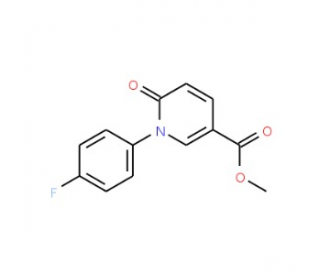详细说明
-
Purity
>95%, by SDS-PAGE under reducing conditions and visualized by silver stain
-
Endotoxin Level
<0.10 EU per 1 μg of the protein by the LAL method.
-
Activity
Measured by its ability to enhance IL-18 BP inhibition of IL-18-induced IFN-gamma release by KG‑1 human acute myelogenous leukemia cells. Bufler, P. et al. (2002) PNAS 99:13723. The ED 50 for this effect is 2.5-12.5 μg/mL.
-
Source
E. coli-derived Val46-Asp218
-
Accession #
-
N-terminal Sequence
Analysis
Val46
-
Predicted Molecular Mass
19.4 kDa
-
SDS-PAGE
25 kDa, reducing conditions
Carrier Free
What does CF mean?
CF stands for Carrier Free (CF). We typically add Bovine Serum Albumin (BSA) as a carrier protein to our recombinant proteins. Adding a carrier protein enhances protein stability, increases shelf-life, and allows the recombinant protein to be stored at a more dilute concentration. The carrier free version does not contain BSA.
What formulation is right for me?
In general, we advise purchasing the recombinant protein with BSA for use in cell or tissue culture, or as an ELISA standard. In contrast, the carrier free protein is recommended for applications, in which the presence of BSA could interfere.
| 7585-IL/CF | | 7585-IL |
| Formulation Lyophilized from a 0.2 μm filtered solution in PBS and DTT. | | Formulation Lyophilized from a 0.2 μm filtered solution in PBS and DTT with BSA as a carrier protein. |
| Reconstitution Reconstitute at 200 μg/mL in PBS. | | Reconstitution Reconstitute at 200 μg/mL in PBS containing at least 0.1% human or bovine serum albumin. |
| Shipping The product is shipped at ambient temperature. Upon receipt, store it immediately at the temperature recommended below. | | Shipping The product is shipped at ambient temperature. Upon receipt, store it immediately at the temperature recommended below. |
Stability & Storage: Use a manual defrost freezer and avoid repeated freeze-thaw cycles. - 12 months from date of receipt, -20 to -70 °C as supplied.
- 1 month, 2 to 8 °C under sterile conditions after reconstitution.
- 3 months, -20 to -70 °C under sterile conditions after reconstitution.
| | Stability & Storage: Use a manual defrost freezer and avoid repeated freeze-thaw cycles. - 12 months from date of receipt, -20 to -70 °C as supplied.
- 1 month, 2 to 8 °C under sterile conditions after reconstitution.
- 3 months, -20 to -70 °C under sterile conditions after reconstitution.
|
Background: IL-37b/IL-1F7b
Human Interleukin 1 family member 7 (IL-1F7), also named FIL-1 zeta, IL-37, IL-1H4, IL-1HL and IL-1RP1, is an anti-inflammatory member of the IL-1 cytokine family. IL-1F7 shares approximately 21%, 24%, and 30% aa sequence identity with mature IL-1 alpha, IL-1 beta and IL-1ra, respectively. Mouse IL-1F7 has not been reported, but human IL-1F7 is active on mouse cells. Five isoforms (IL-1F7a through e) are generated through alternative exon usage and have distinct expression profiles (1‑5). Like IL-1 alpha, IL-1 beta and IL-18, all of the IL-1F7 variants lack a typical signal peptide. The longest IL-1F7 transcript is the basis for the product offered here. This product, also referred to as IL-1F7b, or IL-1F7 isoform 1, is normally generated from a 218 amino acid (aa) proprotein that consists of a 45 aa propeptide plus a 173 aa mature region that is cleaved by caspase-1 to generate the 32 kDa mature form (aa 46-218) (6). IL-1F7 is up-regulated by inflammatory stimuli in peripheral blood mononuclear cells (7). Experimental overexpression of IL-1F7b in vivo limits the inflammatory response and protects mice from colitis and LPS-induced shock (7, 8). Both unprocessed and mature IL-1F7b can form homodimers in solution (6, 7). Although IL-1F7b will bind to IL-18 R alpha with low affinity, this has no effect on IL‑18 receptor activity (4, 6, 9). Alternatively, IL-1F7b will also bind to IL-18 BP, generating a complex that interacts with IL-18R beta. This has the effect of attenuating IL‑18 activity via the IL-18 receptor (9). IL-1F7b can also function intracellularly. Following LPS-induced cleavage of its propeptide, IL-1F7b associates with Smad3 and translocates to the nucleus. This results in a reduction of pro-inflammatory cytokine secretion (10).
-
References:
- Smith, D.E. et al. (2000) J. Biol Chem 275:1169.
- Kumar S. et al. (2000) J. Biol Chem 275:10308.
- Busfield S.J. et al. (2000) Genomics 66:213.
- Pan, G. et al. (2000) Cytokine 13:1.
- Boraschi, D. et al. (2011) Eur. Cytokine Netw. 22:127.
- Kumar S. et al. (2002) Cytokine 18:61.
- Nold, M.F. et al. (2010) Nat. Immunol. 11:1014.
- McNamee, E.N. et al. (2011) Proc. Natl. Acad. Sci. USA 108:16711.
- Bufler, P. et al. (2002) Proc. Natl. Acad. Sci. USA 99:13723.
- Sharma, S. et al. (2008) J. Immunol. 180:5477.
-
Long Name:
Interleukin 37 Isoform B
-
Entrez Gene IDs:
27178 (Human)
-
Alternate Names:
IL37b; IL-37b












